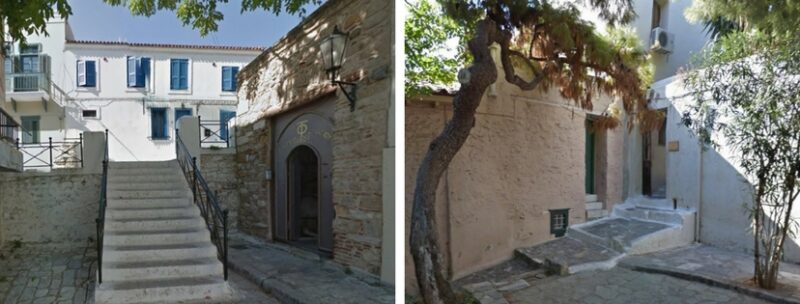In the heart of the tourist areas of Athens hides Agioi Anargyroi, a church like no other. I stumbled upon this religious building during one of my many walks in Athens. Yet, I must have passed by it dozens of times before, without even noticing it. This beautiful discovery amazed me and I wanted to share it with you.
Find Agioi Anargyroi
If you are in the Plaka district or if you discover Anafiotika
You are very close. There are two possible entries:
- Going up the Erechtheos street, just before reaching the last stairs: take the door on your right.
- On Erotokritou Street, you will find a small door leading to the church.
Here on Google Maps – also called Holy Church of the Holy Unmercenaries of Kolokynthis – Metochion of the Holy Sepulchre
Don’t be afraid and walk in the door, you won’t be disappointed.

Calm and serenity of an ancient monastery
The place is amazing, full of charm but also very soothing. The configuration of the site is reminiscent of the old monastery dating from 1651 on which the present church was built. A small, shady courtyard with trees invites you to relax. You’ll still see some of the cells and a well once used by the monks. An underground tunnel is said to be hidden here.
The Agioi Anargyroi Church, High Place of the Holy Sepulchre
The church Agioi Anargyroi is also called To Metochi tou Panaghioiu Tafou or The High Place of the Holy Sepulchre. In fact, every year on Holy Saturday, the Holy Light from the Holy Sepulchre arrives here first.
The church was built on the site of an old monastery. Then, during the invasion by the Venetians under Morozini, in 1687, it was destroyed and then purchased by the Holy Sepulchre.
The name of the Saints Anargyres comes from two brothers: Cosme (patron of surgeons) and Damien (patron of pharmacists). These two holy healers treated people without ever being paid, thus succeeding the ancient cult of Asklepios (Aesculapius). Anargyroi literally means “without money” in ancient Greek.

Religious Memories
In the church many icons struck with metal bring touches of light and invite to meditation. In the courtyard, there is a small old-fashioned store. I advise you to go there. It sells mainly objects for the practice of the orthodox worship: candles, incense, icons, cards… it is unusual, full of charm and authenticity.
Personally, I admit to having a soft spot for these little beeswax candles, sealed in blue, which are a delight to the nose and eyes.
Sophie B, with the precious help of our archaeologist friend




